
After getting to spend some time with a few of these birds recently, I decided to feature them in my story this week. That and the fact that I have barely been able to get out in the field for the last three weeks. Hurricane Season on the Baja is not always an enjoyable thing.
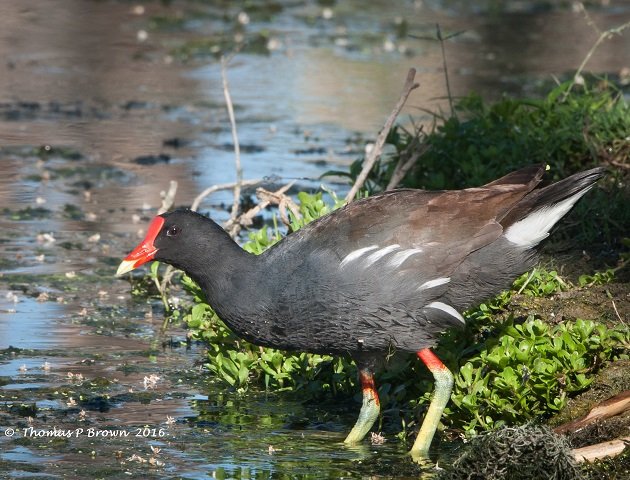
Like many birders, ever since I was a child, these wonderful, shy birds have been known as the Common Moorhen. That is all I have ever known them to be. Then, without sending me a memo, they became Common Gallinules. I felt like I needed to do some research into why this change occurred. Now, mostly, I am just that much more confused. The discussion of Old World Birds, New World Birds, Genetics and Vocalizations, has in fact made a limited amount of sense to me. Without a doubt, one of the best bits of writing on the split of the two birds, was actually featured right here on this site. David J Ringer, on January 11th, 2011 wrote a story called Moorhen Mania: Splitting and renaming of the Common Moorhen. After I discovered his story, I scrapped mine, as there was nothing left to tell. He covered it all, in a clear, concise manner that I will never be able to match. So, I am going to do what I do best, show you some of my pictures, give you a bit of data on the birds, and hope I can go get some great photos of the Varied Buntings I found last Saturday in the rain.
The Common Gallinule, is the most wide spread of all the members of the rail family, being found from Canada, to Chile, Europe, Asia, Africa, much of the Pacific, and the Galapagos Islands. Very much omnivorous, they consume plant life, spiders, works, frogs, well, pretty much anything that you might find in a reedy, swampy area.
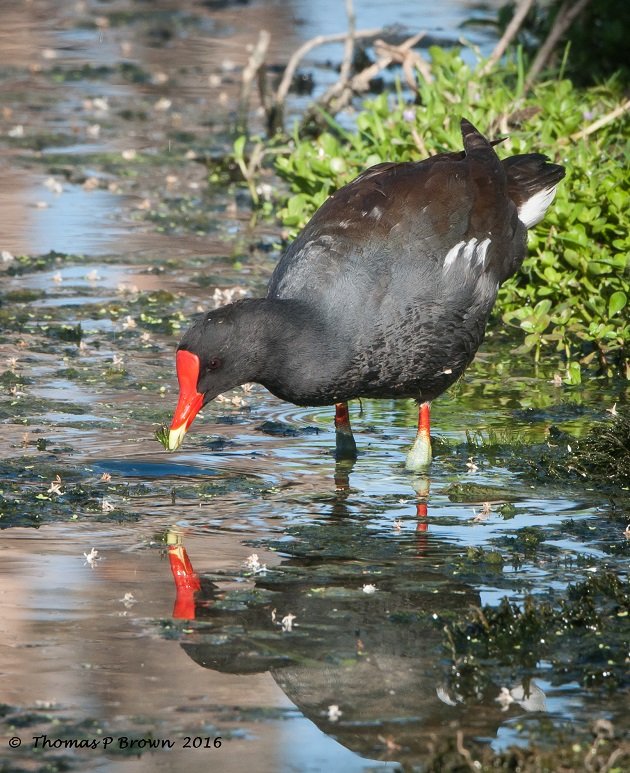
These birds have been known to be prolific breeders, with as many as 8 broods a year, and each clutch holding from 5-13 eggs. I have gotten to observe 6 different family groups here on the Southern Baja, of Mexico, and none of them had more than 4 young that were with the parent. I am not sure if this was just a coincidence, or possibly an effect of the habitat.
I am pretty sure this little one has not been out of the nest for very many days. It was pretty unsure of its self, and footing.
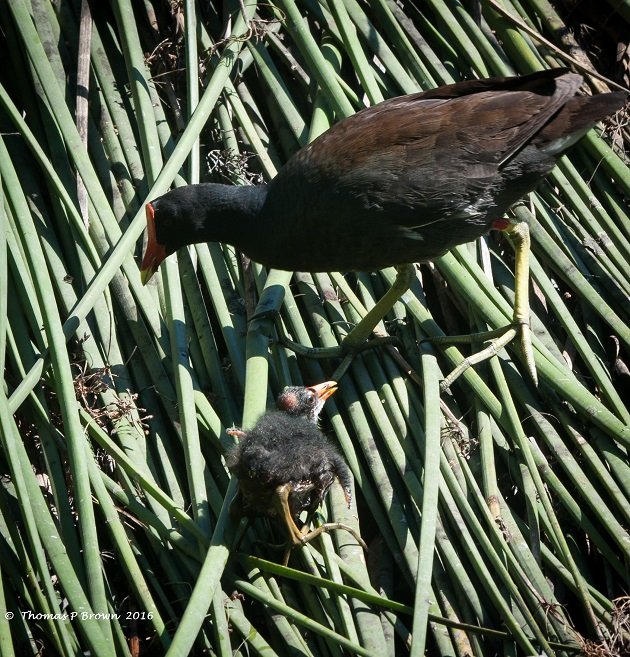
Now these two have their over sized feet all figured out!
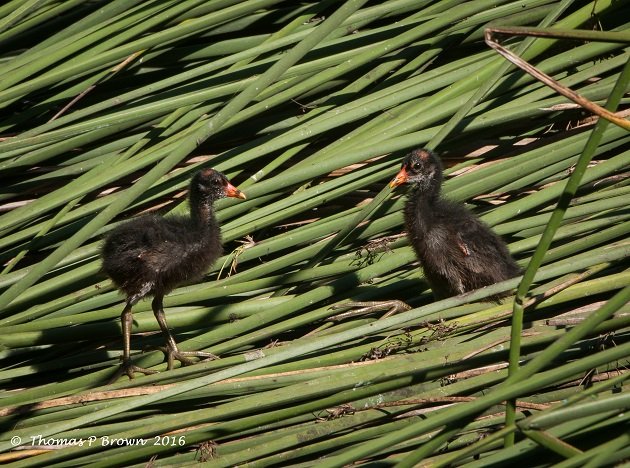
And this little one is already out walking on the reeds looking for something to eat.
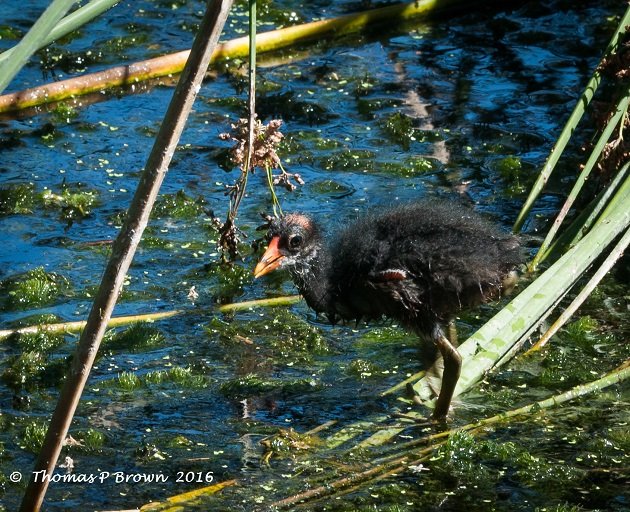













Wonderful photos, and fun to see the chicks!
Thank you very much Wendy!!